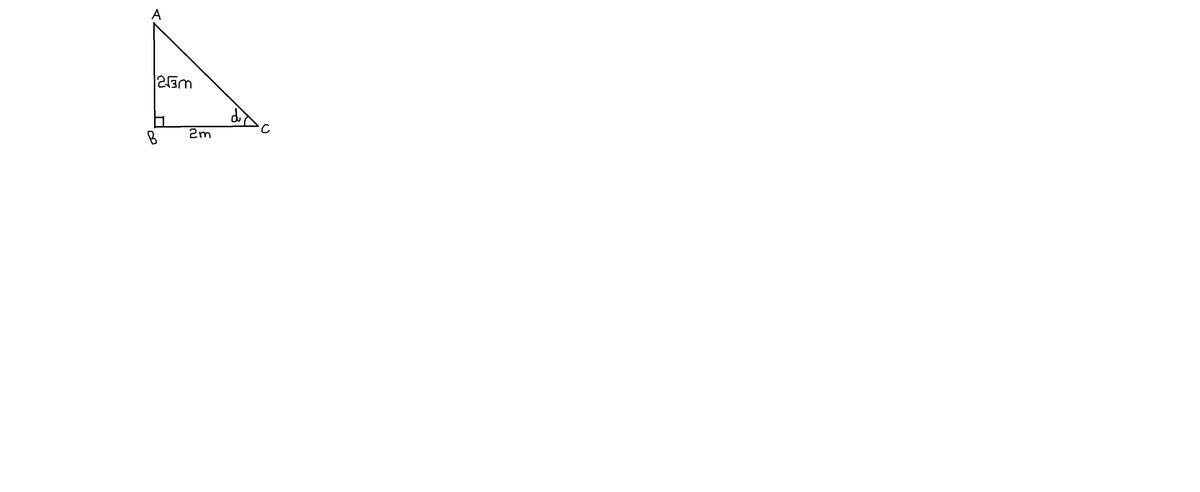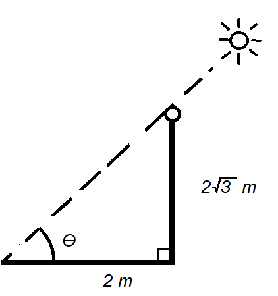Shadows
If the height of a pole is 2 3 metres and the length of its shadow is 2 metres, then find the angle of elevation of the sun.
This section requires Javascript.
You are seeing this because something didn't load right. We suggest you, (a) try
refreshing the page, (b) enabling javascript if it is disabled on your browser and,
finally, (c)
loading the
non-javascript version of this page
. We're sorry about the hassle.
6 solutions
this helps alot, thanks
 as shown in the figure ab =2
3
and bc = 2 . tan d =
a
d
j
o
p
p
=
2
2
3
=
3
=
>
d
=
6
0
0
as shown in the figure ab =2
3
and bc = 2 . tan d =
a
d
j
o
p
p
=
2
2
3
=
3
=
>
d
=
6
0
0
Draw an triangle, write 2 squareroot 3 as opposite and 2m as adjacent, substitue the values and calculate using inverse tan-1(ans
angle of elevation = tan inverse into 2 2 s q u a r e r o o t 3
Illustrate the problem.
The opposite of angle θ is 2 3 m . The adjacent of angle θ is 2 m .
Reviewing trigonometric functions, tan θ = a d j a c e n t o p p o s i t e is one of the trigonometric functions which needs opposite and adjacent. We can use tan θ because we have the opposite of the angle θ , 2 3 m , and the adjacent of angle θ , 2 m .
tan θ = a d j a c e n t o p p o s i t e
Then, substitute o p p o s i t e in the tan θ = a d j a c e n t o p p o s i t e with 2 3 m , and substitute a d j a c e n t in the tan θ = a d j a c e n t o p p o s i t e with 2 m
tan θ = 2 m 2 3 m
Cancel the 2 s in the tan θ = 2 m 2 3 m because the fraction 2 2 3 has two 2s at the both numerator and denominator,
tan θ = 3 m
Divide tan in the both sides of the equation, having the tan − 1
θ = tan − 1 ( 3 )
Now we can use the calculator to input the above equation. The answer would be
θ = 6 0 ∘